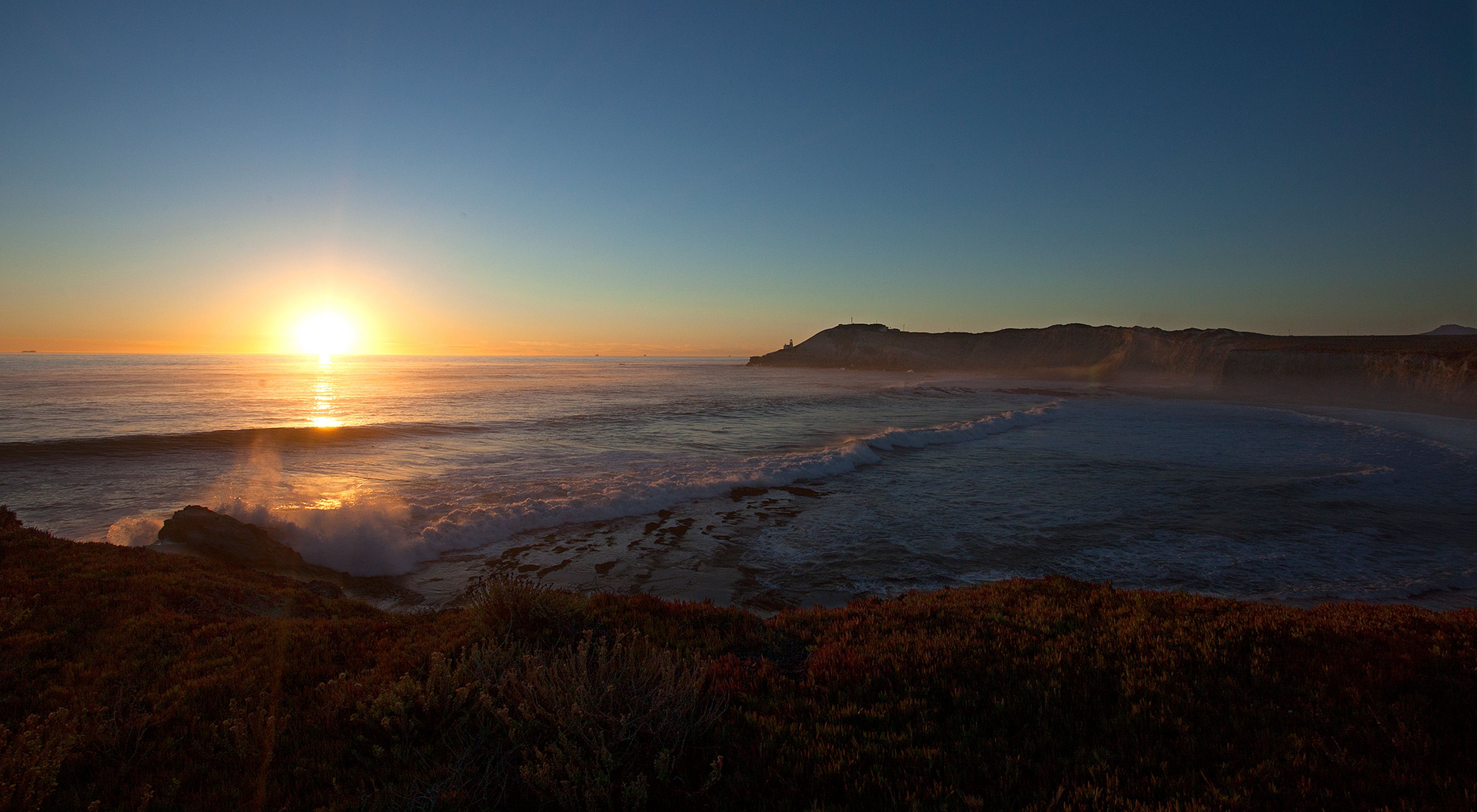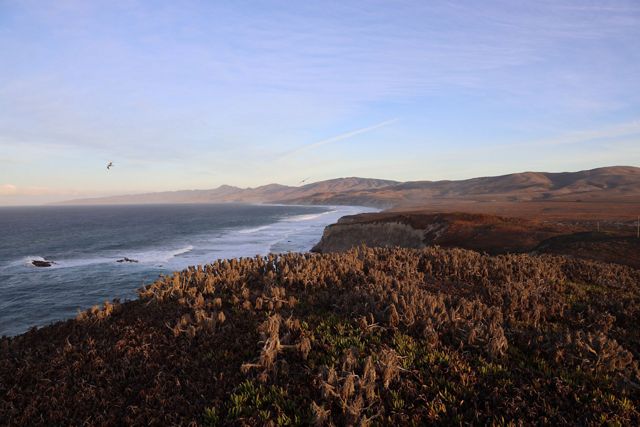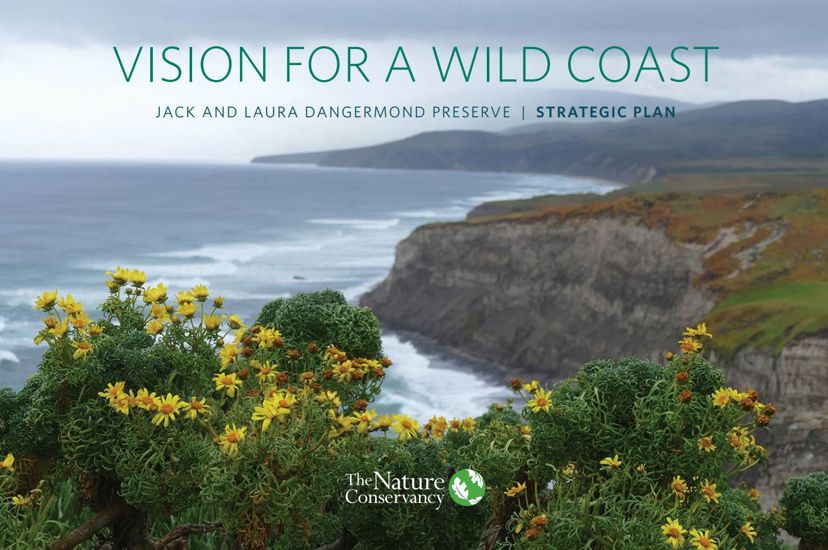Winter 2023 Update
The Point Conception Institute
New approaches for understanding environmental change

The establishment of the Dangermond Preserve as a stronghold for biodiversity continues to create new opportunities for conservation science and restoration. The Jalama Creek watershed body of work is an excellent example. TNC owns nearly the entire 24 square-mile watershed. Steelhead, also called steelhead trout, is the common name of a form of the coastal rainbow trout (Oncorhynchus mykiss irideus) that hatch in freshwater, migrate to the ocean to forage and mature and return to freshwater streams to spawn, a life history shared with salmon, lamprey, and sturgeon that is called anadromy. Jalama Creek was once an important steelhead stream system. Southern California populations of steelhead have declined precipitously with steelhead last observed in Jalama Creek in the 1990s and the southern California population of steelhead was declared federally endangered in 1997. TNC’s ownership and management of Jalama Creek makes it an ideal setting for conservation efforts and it has enabled Point Conception Institute’s (PCI’s) research and restoration partners to deploy a network of surveys and freshwater sensors while working on an ambitious plan to bring steelhead back. Recently, Laura Riege, Dangermond Preserve Restoration Manager and Keith Miller, Dangermond Preserve Restoration Associate, led a NOAA-funded barrier removal project. They used explosives to remove the JA-1, an old non-functional dam which completely blocked upstream passage for freshwater species. Blowing up a dam for steelhead attracted the attention of the Los Angeles Times and led to an in-depth feature story on our science and conservation work.
Research
-
The Point Conception Institute (PCI) has now facilitated more than 95 research projects, establishing relationships with principal investigators and research partners from more than 40 institutions. The interest of leading research institutions continues to be a testament to the scientific opportunities at the Dangermond Preserve and to the potency of PCI as a collaboration catalyst. In particular, the University of California, Santa Barbara (UCSB) research projects funded by the Zegar Family Foundation have created valuable learning opportunities for PCI in developing an innovative approach to high-impact scientific collaborations.
Projects
-
- Wildlife community resilience to wildfire. Dr. Ruth Oliver, UCSB Bren School
- Mapping and dating marine terraces from Point Conception to Point Sal to evaluate rates and patterns of coastal uplift and fault hazards, Nate Onderdonk, CSULB
- Ecosystem assessments based on Earth observations to inform management of invasive ice plant for biodiversity conservation, Dr. Ben Halpern, NCEAS, Drs Mark Reynolds, Elizabeth Hiroyasu, TNC, and Laura Riege, TNC.

Spotlight
Coastal Science
With a thousand miles of coastline and a favorable climate, California (USA) is known for its breathtaking coastal areas and beaches. Coastal areas around the world are threatened by incompatible development and habitat destruction, sea level rise, and changing ocean conditions. Remaining areas of wild coastline are strongholds for biodiversity and resilience in a changing world. California has long been a leader in coastal protection but how well is our coast protected against growing threats? A recent study published in the journal Frontiers in Conservation Science fully led by PCI and Nature Conservancy scientists investigated protection of remaining wild coastal areas in California using a simple methodology that can be applied in other settings.
The authors of the study established simple and easily assessed criteria for mapping wild coastal areas defined by physical and ecological intactness and connectivity, native species and habitat diversity, and limited human disturbance. Coastal wildness is threatened by high demand for access to and development of coastal margins; sea level rise exacerbates this threat. As a case study, California, a biodiversity hotspot, has a network of marine and terrestrial protected areas along the coast and strong coastal policy. While 35% of California’s coast has wildness attributes, only 9% of California’s coast is characterized as wild and also protected on both land and in the adjacent waters. A multi-tiered approach is needed to incorporate wild coast attributes into conservation planning and protection of coastal areas. A coastal wildness designation may be needed, as well as policies that manage for wildness attributes in existing protected areas.
We have also developed external-facing products that go hand-in-hand with our peer-reviewed scientific literature, including a Wild Coast Modeler Tool and an accompanying StoryMap. We are continually looking for opportunities to integrate our data into large networks. An example is the data from the marine monitoring trailer deployed on preserve that provides surveillance data of boat traffic in the Point Conception State Marine Reserve, which we are sharing with the National Oceanic and Atmospheric Administration, California Department of Fish and Wildlife, and other regulatory agencies that oversee Marine Protected Areas. These agencies use the data in monthly meetings to evaluate staffing and risks to Marine Protected Areas across California.
Update: PCI Science Symposium 2024
PCI is partnering with UCSB’s Bren School of the Environment to host our next Point Conception Institute Science Symposium on the UCSB campus on March 15, 2024. Stay tuned for updates on the program closer to the date. To learn more about the event, please see the 2023 PCI Symposium Report.
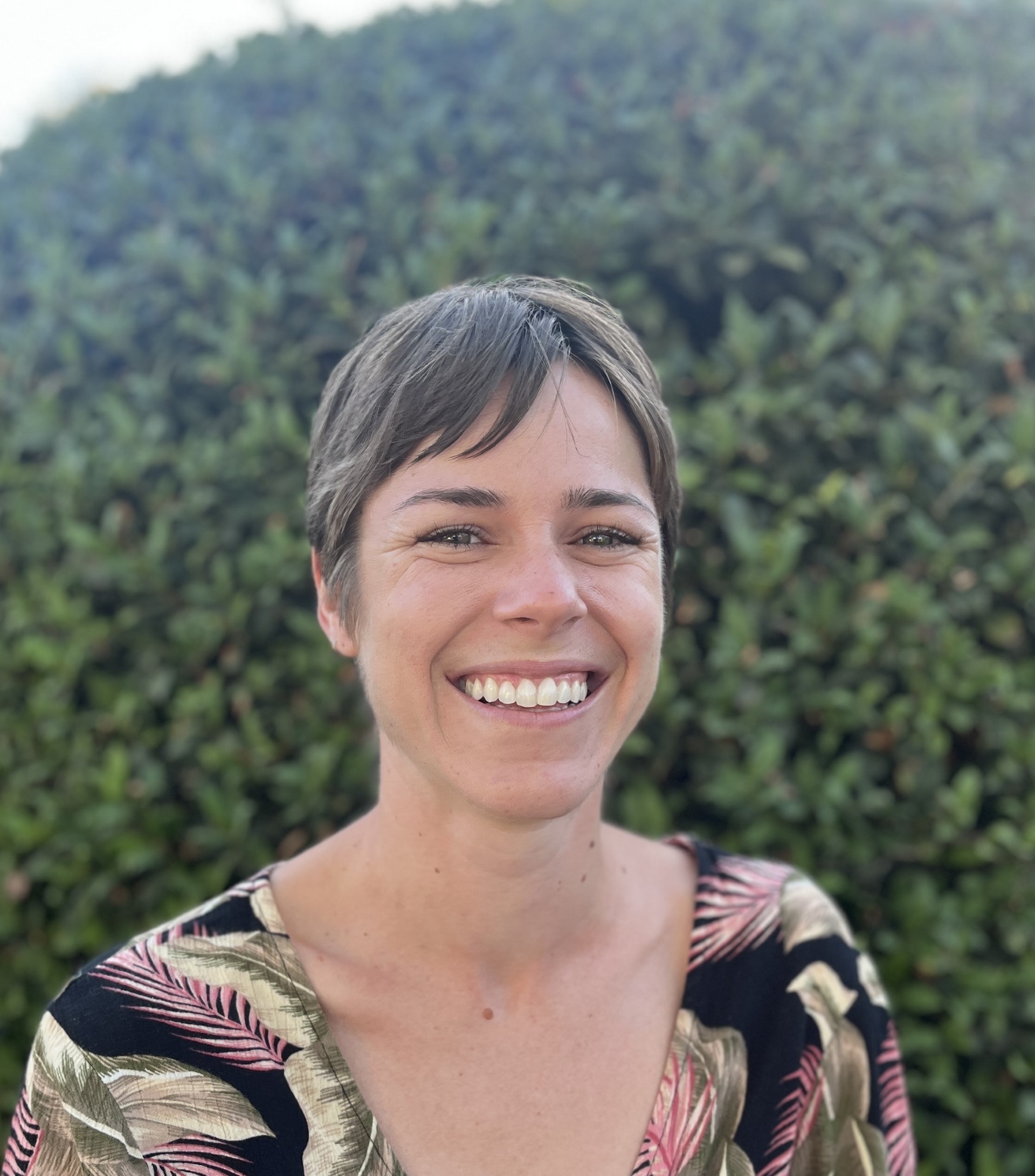
PCI Fellows Program
TNC is pleased to announce that the inaugural Point Conception Institute Anthony LaFetra Research Fellow is Dr. Erica Nielsen, a coastal marine scientist who shares the deep passion for California and its native wildlife that Anthony LaFetra personified throughout his life.
After a highly competitive search that attracted dozens of applicants from around the country, Dr. Erica Nielsen was selected as the program’s first fellow.
To learn more about Erica and her work, click here.
New website
We are excited to announce that Dangermond Preserve and PCI launched a new website this summer, visit us at https://www.dangermondpreserve.org/.
Please bookmark this page: https://www.dangermondpreserve.org/science/point-conception-institute/.
Collaborations




In summer 2023, PCI offered internships and capstone projects to a select group of graduate student researchers from the UCSB Bren School working on the Gaviota Coast Conservation Plan project.
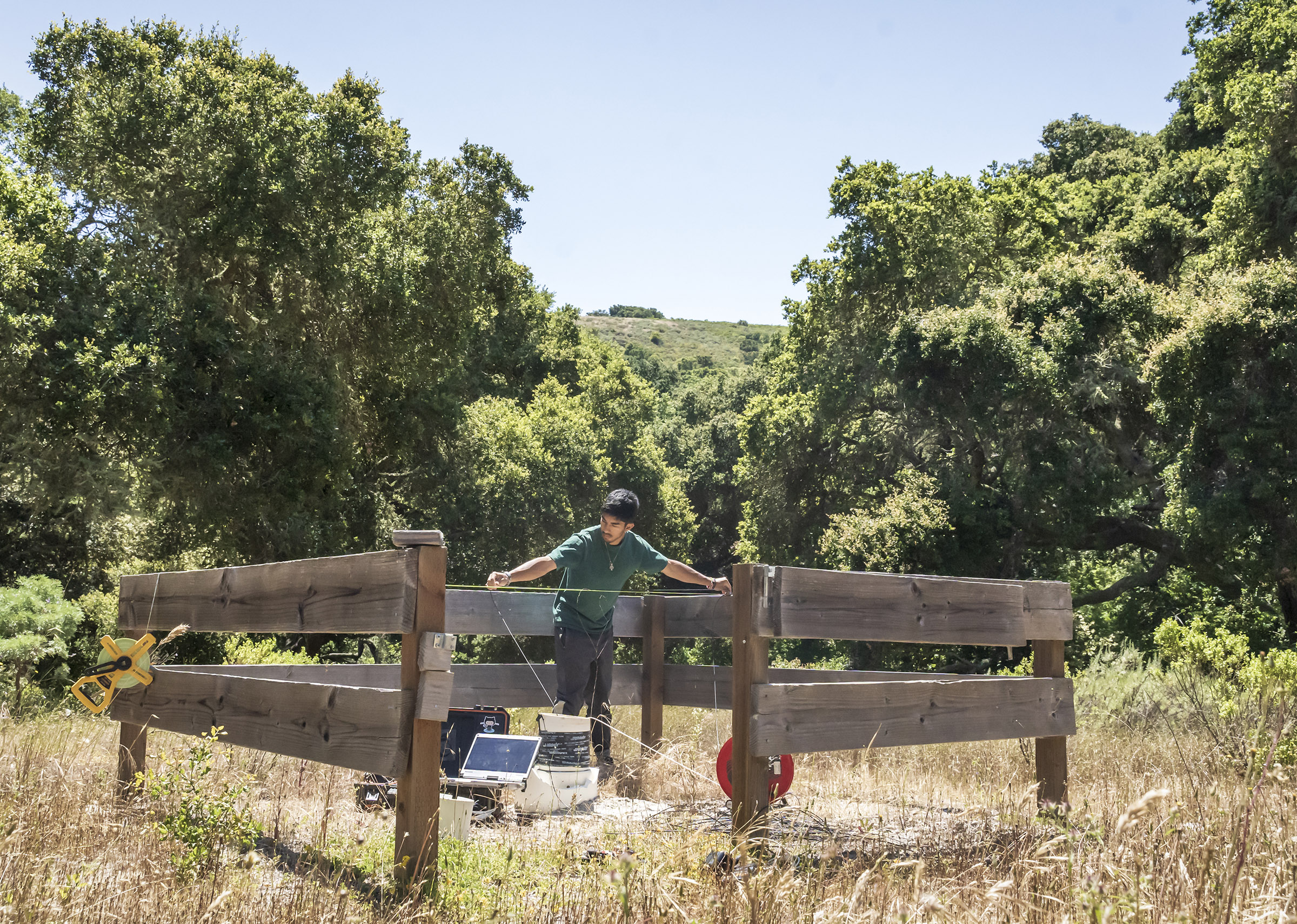
Freshwater Digital Twin Guidebook and Other Tools
Conservation Technology
This year, we continued to expand our preserve monitoring network by deploying several new technologies.
Freshwater Digital Twin Guidebook and Other Tools
As part of our work to expand the adoption and use of data outside of our initial partner network, we have developed a Freshwater Digital Twin Guidebook, which will be key to documenting lessons learned in the instrumentation of the Jalama Watershed and in analyzing data from its sensors. This guidebook distills the tools and techniques we have used in the implementation of a Freshwater Digital Twin of the Jalama Watershed over the past two years into a step-by-step user guide to installing technical instrumentation, building operational data streams, and developing inputs to water-balance and water-budget equations for watershed monitoring and management.
To learn more about this work, check out our staff stories featuring PCI’s Conservation Tech Associate, Jinsu Elhance’s work.
If you are ready to submit your research data or want to see published research data from nearby, check out our Dangermond Preserve Research Repository for Data Discovery.
Thank you for your support!
We are grateful for your support of PCI’s mission to harness the power of science and technology for conservation. As we begin a new year, we can reflect on the progress we’ve made and the dynamic research community we are building together. While these biannual newsletters are a great way to provide updates, we can’t wait to be together again. PCI is partnering with UCSB’s Bren School to host our next Point Conception Institute Science Symposium on the UCSB campus on March 15, 2024. We look forward to gathering our research community and continuing to learn from each other.
Onward!
Mark
Spring 2023 Update
The Point Conception Institute
Collaboration, Open Science and Technology for Conservation Impact
Research Highlights
The Point Conception Institute (PCI) has now facilitated more than 70 research projects, establishing relationships with principal investigators and research partners from more than 20 institutions (see PCI Research tab). The interest of leading research institutions is testament to the scientific opportunities at the Dangermond Preserve and to the potency of PCI as a collaboration catalyst. In particular, the University of California, Santa Barbara (UCSB) research projects funded by the Zegar Family Foundation have created valuable learning opportunities for PCI in developing an innovative approach to high-impact scientific collaborations.
New Projects
- Marine resource use by small mammals—Katie Elder, Dr. Tim Bean, Cal Poly SLO
- Prescribed fire planning, implementation, monitoring—Dr. Elizabeth Hiroyasu, Moses Katkowski, TNC, UC Berkeley, UCSB, UC Extension
- Seal haul-out camera monitoring—Dr. Chris Lowe, Shark Lab, CSU Long Beach
- Marine to terrestrial ecosystem subsidies on the Gaviota Coast—Dr. Hillary Young, Zoe Zilz, UCSB
- Headland bypass dune ecosystems and sand transport analysis—Dr. Ian Walker, Maddison Heffentrager, UCSB
- Linking freshwater ecosystems to wildfire risk, a new NASA grant—Dr. Ben Halpern, NCEAS, and Dr. Kelly Easterday, TNC
Spotlight: Groundwater Research
UCSB Bren School Associate Professor Scott Jasechko and colleagues published an important study in Nature Communications on analysis of thousands of groundwater wells (including wells at Dangermond Preserve). Their research shows that modern groundwater is being pulled deeper into heavily pumped aquifer systems, potentially endangering deep groundwater quality.
Coming Later in 2023
We have been hard at work on renovations and construction of the PCI Field Station at Dangermond Preserve. Thanks to our visionary donors the Zegar Family Foundation, the Zarcades Family Foundation and the Jack and Laura Dangermond Conservation Foundation, PCI will have much-needed research facilities and overnight accommodations later in 2023.
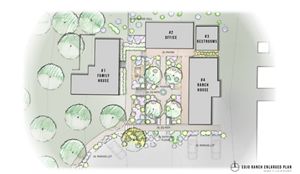




PCI Field Station: Rendering of the future Point Conception Institute Field Station. © 10Over

PCI Field Station #1: This newly renovated ranch building was historically called “The Family House.” Renamed the Zarcades Family House, it will house visiting scientific researchers. © TNC

PCI Field Station #4: Located at The Dangermond Preserve’s PCI research complex, this building, historically called “Cook House,” is now named PCI’s “Zegar Cook House.” © TNC

PCI Field Station #2: Adobe Office. © TNC
Update: Project Shift—NASA-UCSB-TNC PCI Research
In September, NASA-JPL led a convening of Project SHIFT (Surface Biology and Geology High Frequency Time Series) at the National Center for Ecological Analysis and Synthesis (NCEAS) in Santa Barbara. More than 40 researchers from NASA, UCSB, UCLA, TNC, the University of Wisconsin and other institutions participated in the two-day conference.
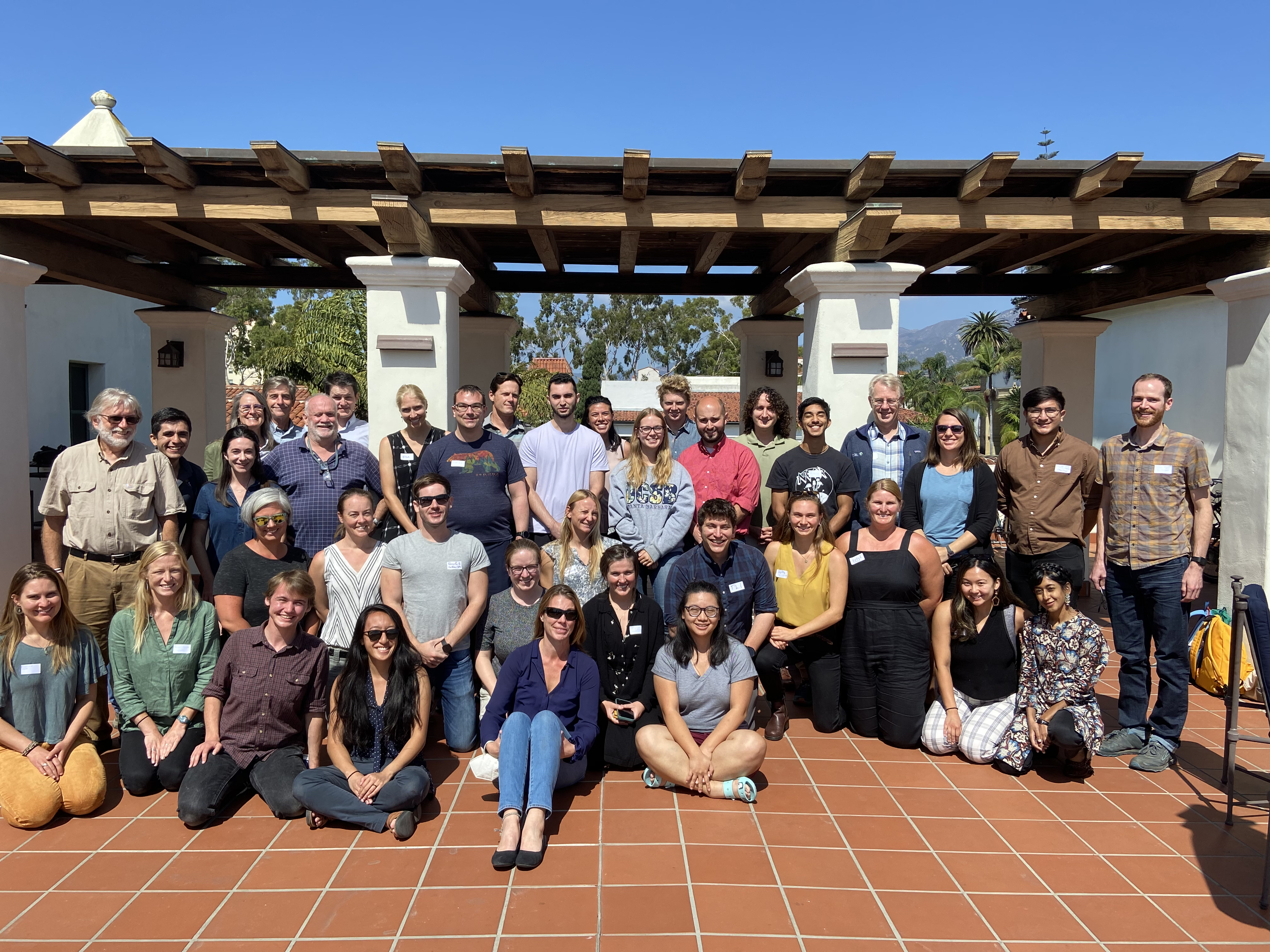
PCI Fellows Program
We are excited to announce the La Fetra PCI Research Fellow Program. Thanks to a generous gift from the La Fetra Family Foundation we are establishing a conservation research fellows program for scholars working with PCI. Research fellows play a critical role in facilitating collaborations among diverse institutions and lead the execution of complex research plans to deliver scientific discoveries and findings. Fellows will work at the interface of science and TNC’s conservation work at the Dangermond Preserve. We plan to bring on our inaugural La Fetra PCI Fellow in 2023.
PCI Fellow Opportunity
The Nature Conservancy’s Point Conception Institute (PCI) is excited to announce that we are now accepting applications for our inaugural La Fetra PCI Conservation Science Fellow. The La Fetra PCI Research Fellow Program aims to leverage the ecological bounty of the Jack and Laura Dangermond Preserve to attract scientists who will tackle today’s most pressing conservation challenges. We aim to bolster the next generation of science leaders by providing a two-year opportunity to engage in applied conservation science research. Over their term, the La Fetra PCI fellow will collect, analyze and synthesize data on endangered, threatened and special status plant and animal species, as well as threatened natural communities and ecosystems, to inform conservation strategies. Candidates with a background in coastal ecology, biodiversity, freshwater ecology, conservation technology, data science, historical human ecology and climate change are invited to apply through our applicant portal or to check out the posting on LinkedIn.
Collaborations
In 2022, PCI offered summer internships and capstone projects to a select group of graduate student researchers from the UCSB Bren School. These students recently completed projects exploring the behaviors of coastal carnivores and identifying conservation priorities along the Gaviota Coast. Additionally, two communications projects were completed by Bren School students focusing on “Discoveries at Dangermond Preserve” and “Carnivores at the Coast.”
Conservation Technology
Last year, we continued to expand our preserve monitoring network by deploying several new technologies. On the operations front we deployed sensors to monitor water tank levels and to alert when problems in the system arise, saving two precious resources— water and our own staff time and capacity. We continue to find ways to increase our onsite awareness as well as generate data to help us answer and anticipate key management questions. Recently, this includes the addition of GPS trackers on preserve vehicles. Gathering information on our vehicle use patterns helps unveil the spatial and temporal use patterns on the preserve, enabling better decision making and planning. These tools and many others develop a more robust picture of our onsite operations and enable us to better steward the land.
In the research and monitoring arena we installed 14 additional wildlife cameras on the coast including five live-streaming networked cameras, giving an instantaneous view of wildlife behavior and dynamics at the coastal-marine nexus. Take a look at this video for a view into how this type of technology is changing the biosecurity game at Santa Cruz Island, and visit this website to learn more about the research behind the cameras.
Moving toward our goal of creating a water budget for the Jalama Watershed, we increased our number of groundwater sensors in the Jalama Creek watershed to a total of 19—these sensors are giving us a look at groundwater level, temperatures and, in conjunction with data from nearby weather stations, the ability to understand and estimate groundwater infiltration rates. This understanding of the water cycle, including critical water transport pathways, will be invaluable for predicting species responses to changing precipitation regimes and water availability. This growing instrumentation network is bookended with investment in cloud storage and visualization platforms, as well as analytical tools that will provide the baseline information needed to springboard even more science and conservation at the preserve.
If you are ready to submit your research data or want to see published research data from nearby, check out our Dangermond Preserve Research Repository for Data Discovery (R2D2).

We are grateful for your support of PCI’s mission to harness the power of science and technology for conservation. As we begin a new year, we can reflect on the progress we’ve made and the dynamic research community we are building together. While these biannual newsletters are a great way to provide updates, we can’t wait to be together again. PCI is partnering with UCSB Geography to host our inaugural Point Conception Institute Science Symposium on the UCSB campus in mid-March. We look forward to gathering our research community and continue learning from each other.
Cheers,
Mark
Media & Publications
PCI Publications
- Gleason, M.G., Reynolds, M.D., Heady, W., Easterday, K. and Morrison, S.A. 2023. The Importance of Identifying and Protecting Coastal Wildness. Frontiers in Conservation Science, 4, p.1224618.
- Rohde, M.M., M. Reynolds, K. Easterday. 2023. Falling through the cracks: Pathways for conserving California’s coastal ecosystems. The Nature Conservancy. San Francisco, California. (.pdf)
PCI Partner Publications
- Zilz, Z.L., Copeland, S. and Young, H.S., 2023. Consistent foraging on marine resources by coyotes (Canis latrans) on the Southern California coast. Food Webs, 37, p.e00311.
- Jasechko, S., Seybold, H., Perrone, D., Fan, Y., Shamsudduha, M., Taylor, R.G., Fallatah, O., Kirchner, J.W., Rapid groundwater decline and some case of recovery in aquifers globally. Nature 625, 715–721 (2024).
In Press
- Genua, L., Anderson, B.C., Bowen, M., Ives, G., Liu, O., Paschos, T., Butterfield, H.S., Easterday, K., Reynolds, M., Thorne, J.H., Spatial patterns of vegetation change in a fire-suppressed coastal California Landscape. In press at Madrono.
Presentations
- Chadwick, K.D., Brodrick, P.G. Easterday, K., Reynolds, M.D., Davis, F.W., Seeing more than green: the value of VSWIR data for conservation and phenology. American Geophysical Union meeting, 2023.
Manuscripts
- Robinette, D., J. Howar, M.L. Elliott, Jahncke, J., and M.D. Reynolds. Assessing physical, biological, and human use attributes affecting shorebird abundance and richness on sandy beaches in southern and central California, USA. Submitted to Estuarine, Coastal and Shelf Science.
- Easterday, K., Reynolds, M.D., Davis, F.W., Dana Chadwick, K.D., et al. authors and order TBD. Impact and Applications of Hyperspectral Data for Conservation and Land Management: a case study of AVIRIS-NG SHIFT. In prep for Ecosphere
- Chadwick, K. D., Davis, F., Miner, K., Pavlick, R., Reynolds, M. et al. Unlocking Ecological Insights from Subseasonal Visible-to-Shortwave Infrared Imaging Spectroscopy: The SBG High Frequency Time Series (SHIFT) Campaign. In prep for Ecosphere
Recent Media
Media: Dangermond Preserve & PCI
- New Dangermond Preserve and PCI website
- LA Times: Environmentalists turning rugged stretch of California Coast into a lab for conservation
- KCLU: The Tri-Counties hidden gem: It's a nearly 25,000 acre nature preserve in Santa Barbara County
- KCLU: It's poop to us, but Santa Barbara County researchers say it's a feast of info about carnivores
- SB Independent: Western Monarch Count
Past Media
Media: Black Abalone Reintroduction
MEDIA: Freshwater Research
Media: Department of Defense REPI (Readiness and Environmental Protection Integration) Conservation Easement on Dangermond Preserve
- Santa Barbara Independent: Historic $15 Million Deal Safeguards Dangermond Preserve from Development
- Santa Maria Sun: Dangermond Preserve now permanently protected
- Edhat: Vandenberg Partners with Nonprofits to Ensure Conservation of Southern California’s Last Wild Coast
- KCLU: Deal insures a 24,000 acre Central Coast nature preserve is permanently protected from development
Project Title |
Institution |
Principal Investigator/Point |
|||
Combining Historical Ecology with New Tools to Understand Climate Effects on Species Distributions |
University of California, |
Steve Gaines | |||
Developing and Implementing Novel Tools for Assessing Riparian Ecosystem Resilience |
University of California, |
Kelly Caylor | |||
Tracking Groundwater and Surface Water at Dangermond Preserve |
University of California, Santa Barbara |
Scott Jasechko |
|||
Human Settlement and Land Use at Point Conception, California |
Smithsonian Institution |
Torben Rick |
|||
Environmental Change and Remote Sensing |
National Aeronautics and Space Administration |
Dave Schimel |
|||
Coastal Carnivore Conservation |
University of California, Santa Barbara |
Rae Wynn-Grant |
|||
Implementation of a Real-Time Acoustic Receiver Buoy off Government Point to Detect Tagged White Sharks in Proximity to New Seal Rookeries |
Cal State University, Long Beach |
Christopher Lowe |
|||
Rocky Intertidal Biodiversity Surveys |
University of California, Santa Cruz |
Pete Raimondi |
|||
Biodiversity Assessment and Characterization of Sandy Beach Ecosystems |
Marine Science Institute |
Jenifer Dugan |
|||
eDNA in Jalama Creek |
University of California, Los Angeles |
Maura Palacios Mejia |
|||
Gaviota Tarplant Genetic Study |
Dudek |
Jake Marcon |
|||
Surveys for and Collection of Buckwheat Blue Butterflies (Euphilotes sp.) |
ManTech International Corporation |
Alice Abela |
|||
Gaviota Tarplant: Protecting Rare Plants from Invasive Plants |
California Invasive Plant Council |
Jutta Burger |
|||
Investigating Fire and Grazing Effects on Historical Vegetation Fluxes in the Dangermond Preserve |
University of California, Santa Barbara |
Max Moritz |
|||
Beach Ecosystem and Shorebird Monitoring |
Point Blue Conservation Science |
Dan Robinette |
|||
Mapping and Dating Marine Terraces from Pt. Conception to Pt. Sal to Evaluate Rates and Patterns of Coastal Uplift and Fault Hazards |
Cal State University, Long Beach |
Nate Onderdonk |
|||
Seabird Movement and Foraging at Dangermond Preserve |
The Nature Conservancy |
Mark Reynolds |
|||
Survey and Collection of Eriodictyon capitatum and habitat suitability for Dithyrea maritima |
Santa Barbara Botanic Gardens |
Matt Guillams |
|||
Large Wave Warning System (LAWWS) |
Cooperative Institute for Research in Environmental Sciences (CIRES), University of Colorado, Boulder |
Lincoln Pitcher |
|||
Western Monarch Thanksgiving Count |
Xerces Society |
Charis van der Heide |
|||
Strontium Isotope Ecology at the Jack and Laura Dangermond Preserve |
University of California, Santa Barbara |
Brian Holguin |
|||
A Novel Remote Camera System that Will Improve Response to Oiled Amphibians and Reptiles |
University of California, Santa Barbara |
Christopher Evelyn |
|||
Documentation of Dangermond Preserve Preservation and Conservation |
University of California, Santa Barbara |
Hank Pitcher |
|||
Biodiversity Assessment and Characterization of Beach Ecosystems |
University of California, Santa Barbara |
Jenny Dugan |
|||
Regional Herpetofauna Biodiversity Assessment |
University of California, Santa Barbara |
Christopher Evelyn |
|||
Population Genomics of Western Pond Turtle, Emys (Actinemys) pallida at Dangermond Preserve |
University of California, Los Angeles |
Brad Shaffer |
|||
Managing the Impacts of Environmental Education in Protected Areas: A Case Study at the Dangermond Preserve |
University of California, Santa Barbara |
Tess Hooper |
|||
Meadowlark Song Study |
Unaffiliated |
Elihu Gevirtz |
|||
Climate Sensitivity and Source Water Use by Riparian Groundwater Dependent Ecosystems in Coastal California |
SUNY College of Environmental Science and Forestry |
John Stella |
|||
Circulation of Ticks and Tick-borne Pathogens at Dangermond |
University of California, Santa Barbara |
Cherie Briggs |
|||
Dynamic Restoration of a Rare Headland Bypass Coastal Dune System, Point Conception, California |
Department of Geography, University of California, Santa Barbara |
Madison Heffentrager |
|||
Paleontological Reconnaissance of the Jack and Laura Dangermond Preserve |
Natural History Museum of Los Angeles County (NHMLAC) |
Dr. Austin Hendy |
|||
sUAS Surveys for AVIRIS SHIFT Campaign |
University of California, Santa Barbara |
Jordan Snyder |
|||
Scaling Hydraulic Traits: SHIFT Campaign Research |
UCLA |
Elsa Ordway |
|||
Assessment of Fairy Shrimp on Dangermond Preserve |
TNC | Elizabeth Hiroyasu |
|||
DNA Metabarcoding and Isotopic Analysis of Wild Pig (Sus scrofa) Scat to Determine Diet Composition and Movement at the Jack and Laura Dangermond Preserve |
TNC | Elizabeth Hiroyasu |
|||
Dangermond Environmental DNA and Isotopes: Restoration and Historical Ecology |
TNC | Sabrina Shirazi |
|||
CCC Inland Roads Restoration Project |
TNC | Laura Riege |
|||
CCC Cojo Marine Terminal Restoration Project |
TNC | Laura Riege |
|||
CCC Percos Restoration Project |
TNC | Laura Riege |
|||
Marine Protected Area Boundary Mapping |
MPA Collaborative Network |
Calla Allison |
|||
CCC Jalachichi Ponds Restoration Project |
TNC | Laura Riege |
|||
CCC Iceplant Habitat Enhancement |
TNC | Laura Riege |
|||
CCC Oaks Mitigation Restoration Project |
TNC | Laura Riege |
|||
Pacific Off-Shore Bat Activity |
USGS |
Bethany Schulze |
|||
Pismo Clam Monitoring |
Cal-Poly SLO |
Benjamin Ruttenberg |
|||
Videography-Photography Offshore of Point Conception to Cojo Anchorage |
NOAA Office of National Marine Sanctuaries West Coast Regional Office |
Robert Schwemmer |
|||
NASA/TNC/UCNRS AVIRIS Field Campaign |
TNC | Mark Reynolds |
|||
SFEI Historical Ecology of Dangermond Preserve |
TNC | Kelly Easterday |
|||
Marine to Terrestrial Resource Subsidy Use on the Gaviota Coast |
University of California Santa Barbara Department of Ecology, Evolution and Marine Biology |
Hillary Young |
|||
Surveys of Stream and Riparian Health |
University of California, Santa Barbara |
Scott Cooper |
|||
Eco-evolutionary Dynamics of a Contemporary Range Expansion |
Bodega Marine Laboratory |
Samuel Walkes |
|||
Chaparral and Shrubland Prescribed Fire Ecology |
University of California, Davis |
Hannah Etchells |
|||
Monitoring of Prescribed Fire Effects on Coast Live Oaks |
University of California, Santa Barbara |
Ryan Fass |
|||
Prescribed Fire Air Quality Effects |
Lawrence Livermore National Laboratory |
Michael Morrison |
|||
Gaviota Tarplant Populations |
US Fish and Wildlife Service |
Mark Elvin |
|||
Ecological Impacts of Prescribed Fire |
University of California, Santa Barbara |
Shane Dewees |
|||
Anthropology of Prescribed Fire |
University of California, Santa Barbara |
Jordan Thomas |
|||
Jalama Creek Watershed Assessment |
California Department of Fish and Wildlife |
Kyle Evans |
|||
Wildlife Community Resilience to Wildfire |
UCSB Bren School |
Ruth Oliver |
|||
Tech-enabled Species Distribution Assessment |
Yale University |
Walter Jetz |
